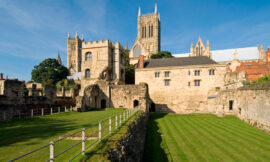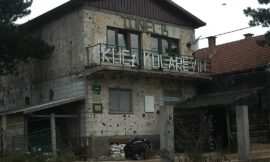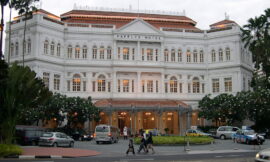Pipers House in Jedburgh is a historical landmark that embodies the rich heritage and architectural charm of this picturesque town in the Scottish Borders. This house is notable not only for its age and architectural features but also for its place in the social and cultural history of Jedburgh.
Historical Background
Pipers House, like many structures in Jedburgh, dates back several centuries. Jedburgh itself has a deep history, with significant developments during the medieval period, especially with the establishment of Jedburgh Abbey in the 12th century. The town flourished as a market and religious center, and many of its buildings reflect this historical growth.
While the exact origins of Pipers House are not as well-documented as some of Jedburgh’s other historic buildings, it is clear that the house has been a part of the town’s fabric for many years. The name “Pipers House” suggests a possible connection to the town’s musical or cultural traditions, although specific historical records detailing this connection are scarce.
Social and Cultural Significance
Throughout its history, Pipers House would have been a witness to the daily lives of Jedburgh’s residents. It might have housed various families over the centuries, each contributing to the town’s social fabric. The name “Pipers House” might indicate a connection to local musicians or cultural figures, hinting at the house’s role in the cultural life of Jedburgh.
Jedburgh, with its abbey, market, and strategic location near the border with England, has always been a bustling town. Houses like Pipers House would have been integral to the community, providing homes for merchants, artisans, or possibly even clerics associated with the abbey.
Blue Plaques
There is evidence of a Piper being employed in Jedburgh from the early 16th century at least. The post became heritable in the Hastie family, who provided generations of pipers until the early 19th century, when other forms of communication took over.
Town pipers were a European-wide tradition and may have derived from wandering minstrels. However, those employed by towns like Jedburgh had official status and respect, often being granted a “piper’s croft”, a house and a small plot of land. In Jedburgh, tradition has it that the house near the Canongate Bridge was the home of the Hastie family, the burgh pipers. A small effigy sits on the corbelled gable.
The piper, often along with a ‘swasher’ or drummer, was required to go around the town at 4 am and again at 7pm. He could lose his wages or be imprisoned if he failed to carry out this duty. He may have had a uniform or livery of sorts and might also have turned out to lead processions or when there was a celebration. There is a record from the mid-18th century that the last piper, Robin Hastie, had a coat with red sleeves and collar, large buckles on his shoes, and a tricorn hat. His swasher at the time was Watty Boyd.
It is believed that the pipers would have retained the traditional tunes and perhaps even the songs and stories of the oral tradition. Their pipes may not have been the Highland ‘great pipe’ but a smaller bellows pipe common in the Borders.
The last piper, Robert or Robin Hastie, died probably at the beginning of the 19th century. He was well-known to Sir Walter Scott, whose own uncle, Mr Thomas Scott, living locally at Monklaw, was a renowned piper and a fund of knowledge about the Border pipers. Walter Scott wrote in “Old Mortality” about the town pipers, probably from first-hand knowledge. Alas, towards the end of his life the last piper’s skills had diminished and he was a “wretched performer”. Alas, many traditional songs and tunes may have died with him.
Modern Context and Preservation
Today, Pipers House stands as a testament to Jedburgh’s enduring history. Efforts to preserve such buildings are crucial in maintaining the historical character of the town. Preservation might involve maintaining the original architectural features, using traditional materials and techniques in any restoration work, and ensuring that the building remains a functional part of the modern town.
Jedburgh attracts many visitors interested in its history and architecture, and houses like Pipers House contribute to the town’s charm and appeal. They provide a tangible link to the past, allowing residents and visitors to step back in time and imagine life in Jedburgh centuries ago.
Visiting Pipers House
For those visiting Jedburgh, a walk around the town to see historic buildings like Pipers House is a rewarding experience. The town offers a rich array of historical sites, including Jedburgh Abbey, Mary Queen of Scots’ House, and the Jedburgh Castle Jail and Museum. Each of these sites, along with Pipers House, helps tell the story of Jedburgh’s historical and cultural development.
Conclusion
Pipers House is an integral part of Jedburgh’s historical landscape. Its traditional architecture and historical significance make it a valuable piece of the town’s heritage. As Jedburgh continues to preserve and celebrate its history, Pipers House remains a key landmark that helps to tell the story of this ancient Scottish town. Whether you are a history enthusiast, a cultural traveler, or simply someone who appreciates beautiful old buildings, Pipers House in Jedburgh is a site worth exploring.



